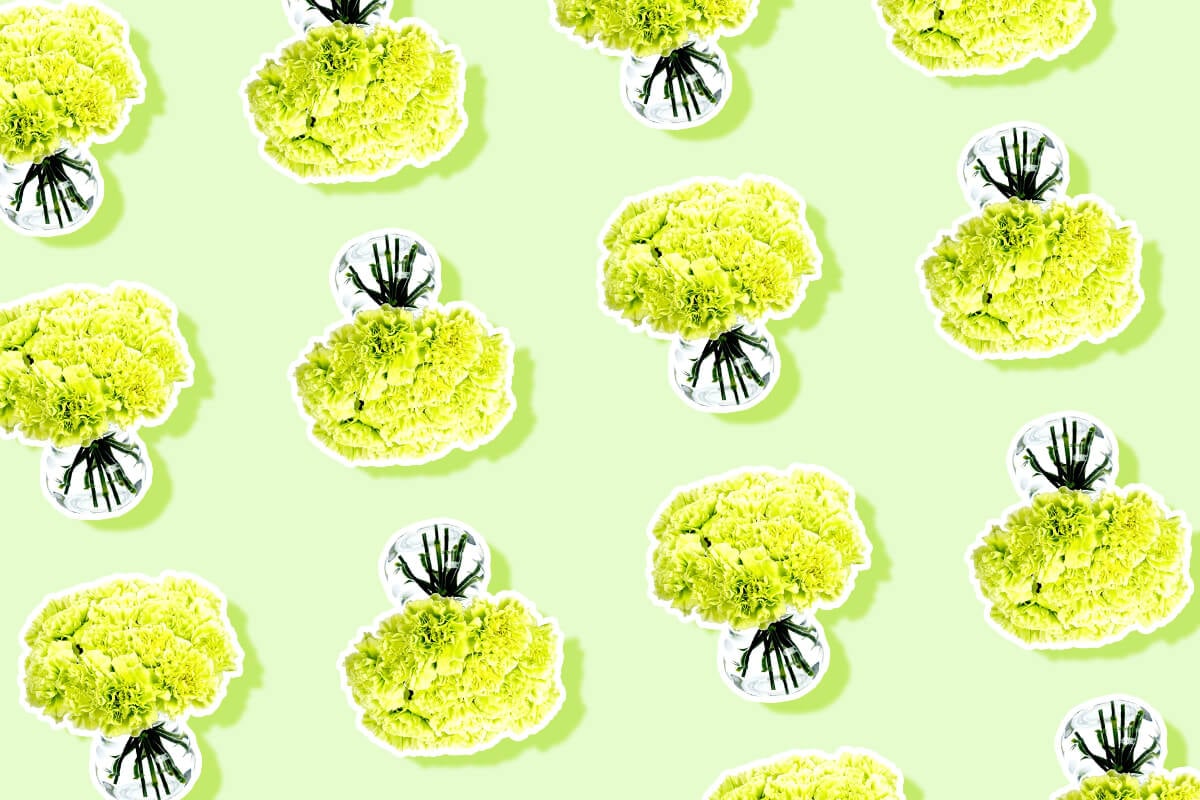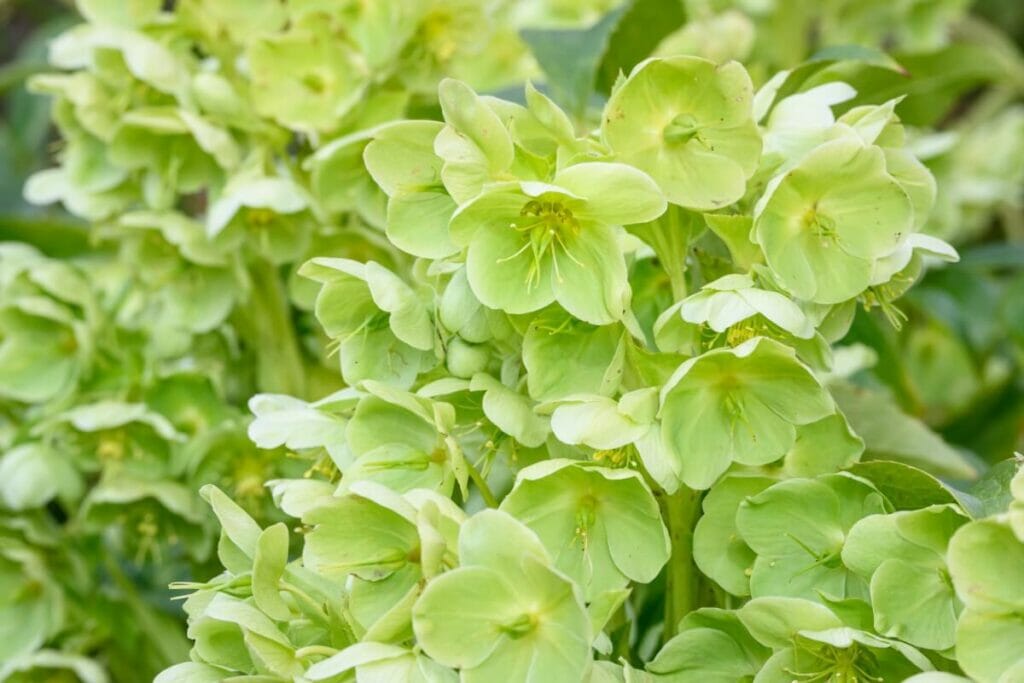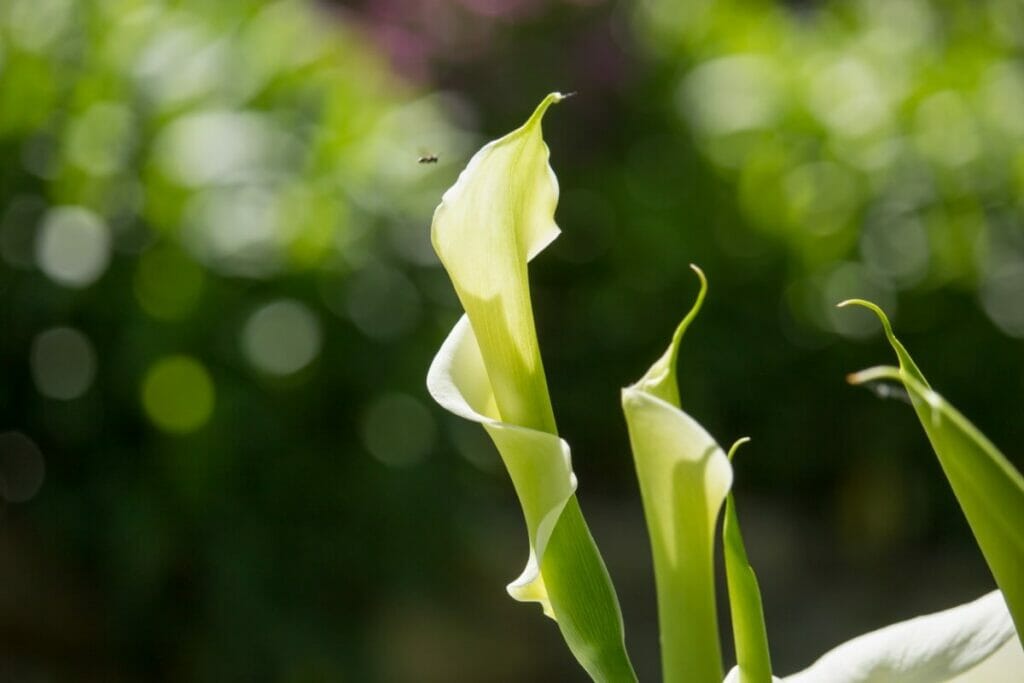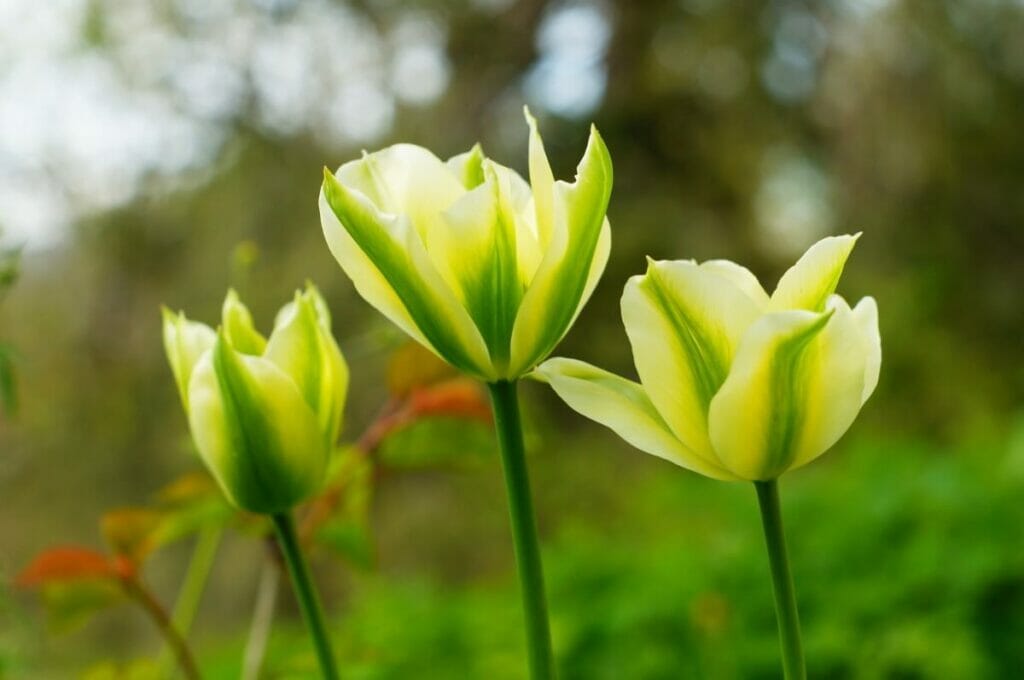Green Flowers: Their Meanings, Symbolism, and Folklore
If you had to guess — right off the top of your head — which flower color is most commonly found in nature, what would your answer be? Pink? White? Yellow? Red? Not quite! The answer is actually green. In many cultures, the color green carries a meaning and symbolism associated with rebirth, vitality, fertility, renewal, purity, relaxation, calm, and nature. A gift of green flowers can send a message of hope, celebration, healing, and peace. And, in many cultures, green is associated with fortune and wealth, making green blossoms a perfect way to wish someone “good luck” or say congratulations.

The Symbolism of Green Flowers

Anywhere plants grow, you’ll find the color green. In most cultures, the hue has meaning. Of course, there are exceptions, such as some cultures in the Arctic, Namibia, and Papua New Guinea that don’t recognize green and blue as distinct colors. In ancient Mesopotamia, the same words were often used for both yellow and green.
In many societies worldwide, however, the color green is recognized and imbued with meaning and symbolism. For instance, in Western culture, the color is often aligned with renewal, rebirth, fertility, vitality, and hope, thanks to an association with spring and new foliage.
In China, green is associated with longevity, nature, and the “wood” element. It’s generally considered an auspicious color with the power to attract money, good fortune, and luck. It’s also associated with cleanliness and purity; businesses may use green branding to indicate trustworthiness.
In the Islamic world, green is associated with paradise and life. It’s thought to be the prophet Muhamad’s favorite color; those in paradise are often depicted as wearing green robes or sitting on cushions. The Iranian and Saudi Arabian flags contain green elements.
Green Flower Meaning in Ancient Times
In ancient times, it’s said that the Roman Emperor Nero loved the color, collected emeralds, and supported green chariots in competition. To medieval Catholics, green was the color of “ordinary time,” as opposed to red, black, or white holy days. In early Germanic poetry, the goddess of love wore a green dress, helping strengthen the color’s association with youth, vitality, and fertility.
Green’s many meanings aren’t all positive. The color is also associated with envy and jealousy; many attribute this symbolism to Shakespeare, who wrote, “O, beware my lord of jealousy./It is the green-eyed monster which doth mock/The meat it feeds on” in Othello.
Some cultures associate green with nausea or being “green around the gills.” In the 19th century, the color became associated with absinthe. While at first wormwood green was seen as fashionable and artistic, as the dangers of absinthe became known, the color became associated with debauchery and melancholy. In the British Isles, green is linked to magic, trickery, and deceit — think leprechauns and the Green Man.
The Victorian Langauge of Flowers
But when it comes to flowers, much of the color green’s positive symbolism and meaning apply. In the Victorian language of flowers, green blossoms were used to send messages related to rebirth, renewal, health, prosperity, and youth. For example, in floriography, a gift of bells of Ireland would wish someone good luck, while cymbidium orchids hope for health and good fortune.
Green flowers feature in art, too. Shades of green feature prominently in Claude Monet’s and Kehinde Wiley’s paintings. Vincent van Gogh’s roses often have a verdant hue.
Common Green Flowers
Roses
Roses are among the most gifted flowers, but green roses are rather rare. For instance, Rosa chinensis ‘Viridiflora’ has unusual but lovely blooms formed by green bracts or sepals, while var. monstrosa ‘Green Rose’ has green and pink petals. A gift of green roses can take on many meanings. You may give green roses to signify new beginnings or celebrate fertility, such as for a wedding or birth, but these unusual flowers may also mean jealousy or envy.
Carnations

The significance of green carnations is multi-faced. In verdant hues, the flowers are associated with Ireland, Irish pride, St. Patrick’s Day, and luck. Wearing a green carnation on one’s lapel can also signal one’s sexuality. This association started in 1892 when the poet Oscar Wilde famously stuck a green carnation in his lapel and encouraged his circle of gay male friends to do the same at the premiere of one of his plays.
Chrysanthemums

Chrysanthemums have been cultivated in China since the 15th century BC, so it should be no surprise that these popular flowers have several symbolic meanings. In their native lands, mums are considered a noble flower and a symbol of longevity, wealth, elegance, and the changing seasons. Green mums signify renewal, youth, good health, joy, and friendship. Popular green varieties include ‘Anastasia Green,” ‘Feeling Green’ and “Lola Green.’
Orchids

Orchids are among the world’s most prized flowers. These delicate beauties grace any room with their elegant blooms and sophisticated hues. While several species — and many more cultivars — of orchids have a green hue, the color is still uncommon. In the language of flowers, it’s easy to see why a gift of orchids sends a message of elegance, exoticism, and rare beauty.
Hydrangeas

The lovely, showy hydrangea is a favorite among florists, home gardens, and wedding planners, thanks to its dramatic clusters of petals. To the Victorians, a gift of green hydrangeas was a way to send several positive messages; the flowers symbolize abundance, prosperity, and good fortune. Green hydrangeas also signify grace, sincerity, and youthfulness, making them a perfect choice for anyone embarking on a new adventure in life.
Green Lilies

Truly green lilies are rare, making them a meaningful gift. These beautiful flowers can be used to convey meanings such as purity and innocence, as well as hope, rebirth, and peace. A gift of green lilies is a perfect way to wish someone well and let them know you’re rooting for them to find success and good fortune. Green lily varieties include Zantedeschia, ‘Green Goddess.’
Daisies

Daisies are beloved for their cheerful, happy faces that turn to the sun. In floriography, daisies symbolize loyal love, innocence, and purity. The Victorians used daisies to send a message of “I”ll never tell.” Green daisies add another layer of the cheerful, optimistic meaning. They make a perfect gift for congratulations, get-well, weddings, or baby showers. A few Gerbera or African daisy varieties have a green tint, but bright green daisies are likely to be dyed.
Tulips

Some of the world’s most cultivated plants, tulips come in a range of colors that, though rare, does include green. Viridiflora ‘Spring Green’ tulips, for instance, have petals with a fresh, verdant hue. These green tulips symbolize renewal and new beginnings as they herald the changing seasons into spring. Tulips also signify good health and good luck. The Victorians used them to make declarations of love, though today, red or pink tulips might be a better choice for romantic gifts.
Zinnias

The ever-popular zinnia grows in (literally) every color of the rainbow, including green. Popular zinnia varieties include ‘Benary’s Giant Lime,’ ‘Envy’ and ‘Queen Lime.’ A gift of this happy flower sends a message of friendship, loyalty, remembrance, and lasting affection. It’s the perfect flower to send a far-away friend to let them know you remember them fondly.
Bells of Ireland

Bells of Ireland (Moluccella laevis) symbolize good luck and prosperity. They’re also strongly associated with Ireland, thanks to their bright green calyces (the blossoms are white and rather insignificant), even though they’re not Irish natives. A gift of green bells of Ireland lets someone know that you’re sending good wishes and gratitude their way and saying, “good luck!”
Gladiolus

Given that their name comes from the Latin for “little sword” or gladius, it’s no surprise that the upright gladiolus has long been associated with strength. The ancient Greeks believed that a gladiolus grew whenever a sword slew a warrior. Today, a gladiolus gift sends a message of sincerity and generosity and lets someone know you admire their strength. In the Victorian language of flowers, a gift of gladioli meant “I’m sincere.” Popular varieties include the lime green ‘Green Star.’
Suitable Gifting Occasions
Green flowers come in various shapes, sizes, and forms, all holding symbolic meanings. Overall, green flowers tend to send positive messages associated with hope, renewal, good fortune, prosperity, health, and youthfulness.
The uplifting optimism associated with green flowers makes them ideal for celebratory occasions, such as weddings, birthdays, congratulations, housewarmings, baby showers, and graduations. And because green flowers aren’t usually associated with romance, they’re a good choice when you need a floral gift for colleagues or platonic friends.
Green flowers can be an excellent way to send messages of sympathy and get well, too. They send a message of strength and hope that can help people get through difficult times. And green flowers’ connection to remembrance and friendship makes them a perfect way to express gratitude or simply let a friend know you’re thinking of them.
Wrapping Up
In cultures around the world, the color green is associated with rebirth, vitality, nature, and optimism. A gift of green flowers may send a message of hope or of healing. Many cultures associate green with good fortune and prosperity.
Green flowers incorporate these messages into many beautiful shapes, sizes, and hues. Though each flower has its own meaning, green flowers send optimistic messages of hope, renewal, affection, and happiness. Green blossoms are an ideal way to let friends, family, or colleagues know that you’re thinking of them and send wishes for good luck, fortune, prosperity, health, and longevity their way.
What are your favorite types of green flowers?
Linsay is an American copywriter based in the Pacific Northwest with a background in academic writing and research. Linsay holds Master's degree in both Anthropology and Library and Information Sciences and has written for numerous national and international publications including USA Today, SFGATE, Hunker, and The Bump across an array of topics in the gardening, green living, and travel sectors. When she's not writing, you'll usually find Linsay reading, kayaking, sailing, snowboarding, or working in her garden.

